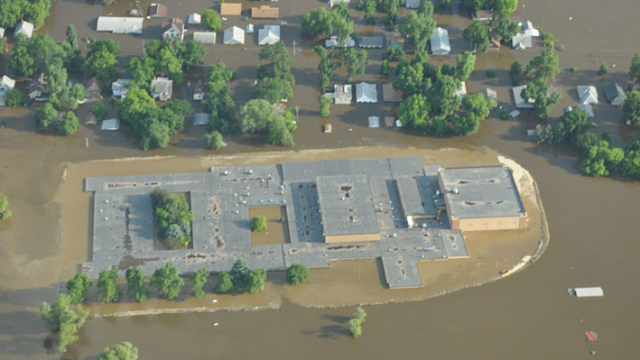Jon Godfread: Congress Should Reauthorize the National Flood Insurance Program

The current National Flood Insurance Program (NFIP) reauthorization expires on September 30, 2017. As flood insurance is an important issue for the North Dakota Insurance Department, for our state and for the thousands of consumers in North Dakota who are affected by the decisions being made at a federal level regarding flood insurance, I want to share a few thoughts I have and recommendations I’ve recently made to Senators Hoeven and Heitkamp.
Currently, the NFIP is seeking to reduce the costs and consequences of flooding for policyholders while at the same time encouraging flood mitigation and decreasing our dependence on federal disaster assistance. Given these objectives, Congress faces a real challenge in trying to maintain a balance between improving the financial solvency of the program and reducing taxpayer exposure while maintaining affordability for the consumer.
First and foremost, the North Dakota Insurance Department fully supports legislative efforts that facilitate the growth of a state-regulated private flood insurance market to help provide consumers with more choices and coverage potentially at more affordable prices. While the NFIP has historically served as the primary source of flood coverage in the U.S., more sophisticated risk mapping and modeling has been developed in recent years and is now generating new interest among private insurers to provide such coverage.
[mks_pullquote align=”right” width=”300″ size=”24″ bg_color=”#ffffff” txt_color=”#000000″]It is imperative that Congress should reauthorize NFIP prior to its expiration. Reauthorization would help avoid short-term extensions and program lapses that could create uncertainty in the insurance market.[/mks_pullquote]
NFIP reauthorization could be an opportunity to remove some of the barriers that currently preclude the creation of a robust private flood insurance market. Opponents of such a market are concerned that growth within the private flood insurance market could lead to a “cherry picking” of the best risks by the private market. This concern, however, is unfounded and represents a fundamental misunderstanding of catastrophe insurance, which is largely driven by risk concentration and high potential losses. Hurricane Katrina and Superstorm Sandy, for example, resulted in unprecedented losses to the NFIP because of the high number of insured properties that were damaged. The NFIP was the sole “insurer” for both disasters and subsequently sustained enormous losses. Allowing a more robust private market would have helped spread that substantial risk and devastating loss across a broader market and the impact would not have been as damaging to a single insurer with concentrated risk. Spreading the risk and adequately rating that risk has and will continue to work in the property insurance world. Spreading the risks across multiple insurers keeps rates affordable for consumers and limits the impacts of catastrophic disasters. A private market can actually help make the NFIP more competitive and more sustainable.
The Department also supports efforts being made that would clarify state insurance regulators’ authority over private flood insurance and provide a clear definition of “private flood” therefore removing confusing language and encouraging more insurers to enter the market. Facilitating the entry of additional carriers into the market will provide consumers with access to additional options for flood insurance products.
In addition to supporting the creation of a regulatory environment that allows for a private flood insurance market, it is critical that reauthorization legislation focus on increasing flood mitigation efforts. Floods continue to be one of the most destructive natural hazards, and encouraging investment in prevention and preparedness measures is critical to minimizing the impact of damage and economic loss. The Department supports mitigation discounts, such as premium discounts or insurance rate reductions, to persons who build, rebuild or retrofit certain residential properties to better resist flood events, along with legislation to allow individuals to set aside funds in a tax-preferred savings account for disaster mitigation and recovery expenses.
Finally, the Department encourages legislative reforms that ensure accurate flood mapping. FEMA needs to provide increased transparency regarding its decision-making processes for developing and updating its flood maps along with its approach to rate making so that policyholders understand their current flood risk. Any reauthorization legislation should include strategies to increase flood insurance usage, including facilitating opportunities to educate consumers about flood insurance policy options and encouraging the purchase of flood insurance for those outside of special flood hazard areas.
I understand the difficult task Congress faces with regard to this reauthorization. However, I feel it is my duty as a representative of North Dakota consumers to advocate for the positive changes I’ve outlined above. It is imperative that Congress should reauthorize NFIP prior to its expiration. Reauthorization would help avoid short-term extensions and program lapses that could create uncertainty in the insurance market.




